Interrogative
public sculpture, Vallastaden, Linköping, Sweden, 2017
Public sculpture, Vallastaden, Linköping, 2017 Material: stainles steel, polished (planes) and brushed (frame)2,5x2x5 mThe sculpture consists of a modular system of axially displaced surfaces and voids with architectural references to an unfinished space / hall / entrance and suggests a development process, an ongoing creation.
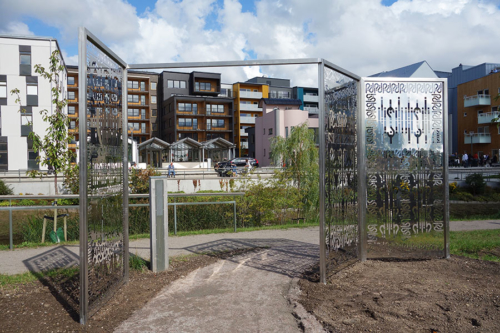
An ornamental pattern is created from question marks and exclamation marks and cut out from the modules. These symbols refere questions and answers,which can be seen in reference to the neighbouring university. Being curious, asking a question is often the beginning of new discoveries. Science and research are based on research questions whose goal is to find a solution/answer.A question can also build bridges and create contacts between people. In the city space, a question is a tool for people to get in touch with each other, for example when asking for directions. Through questions and answers we increase our understanding of other people. Human curiosity and the desire to find answers / solutions is a strong driving force for developing a society.
The question mark and the exclamation point are superimposed, twisted and linked into visual patterns. The cut-out pattern generates a space that frames the view in the background. By looking through the cut-out pattern, the surrounding nature and architecture are cropped inside the pattern through silhouettes.The surface of the sculpture mirrors the surroundings and its appearance changes according to the angle and the movement of the viewer. The colour changes depending on the weather, time of day and season, which makes the sculpture change in dialogue with the surroundings.
Through the reflective surface, and the possibility of looking through the cut-out pattern, architecture and nature views, the sky and the ground overlap, and even the observer becomes part of the scene. Depending on the location, it can also generate visual feedback. The different angled surfaces reflect different image sections and change the view depending on the angle of reflection.
The view of both sides of the river (historically often a symbol of economic differences between residents) are linked visually.When sunlight hits the sculpture, shadow patterns and light reflections are formed.
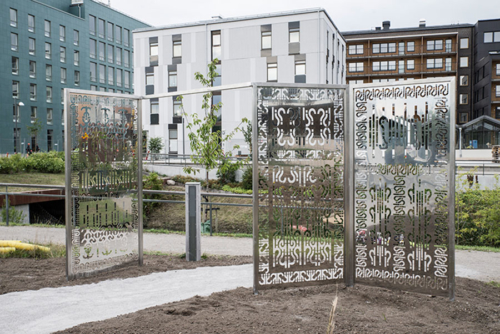
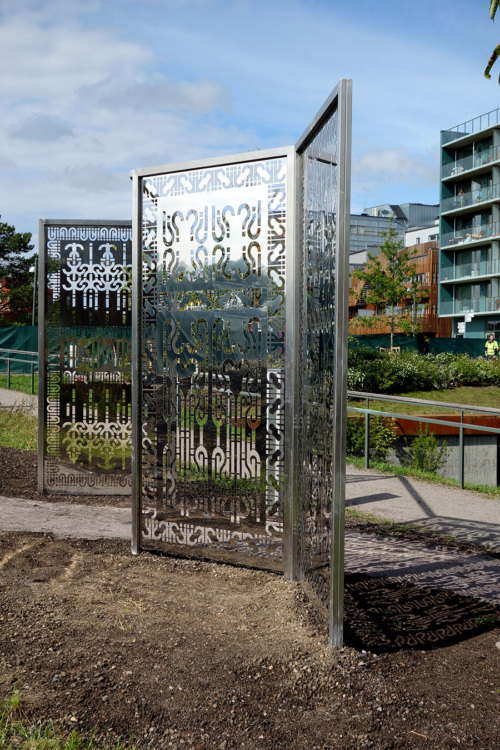
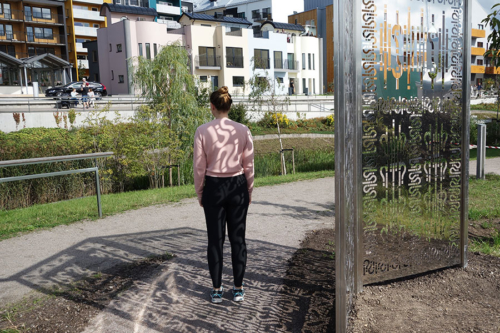
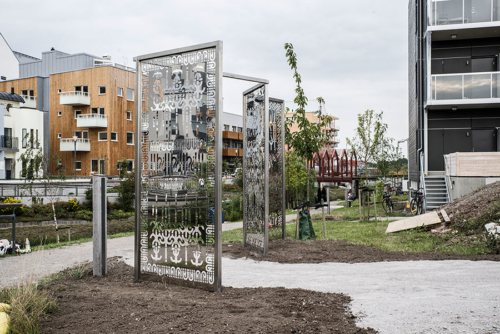
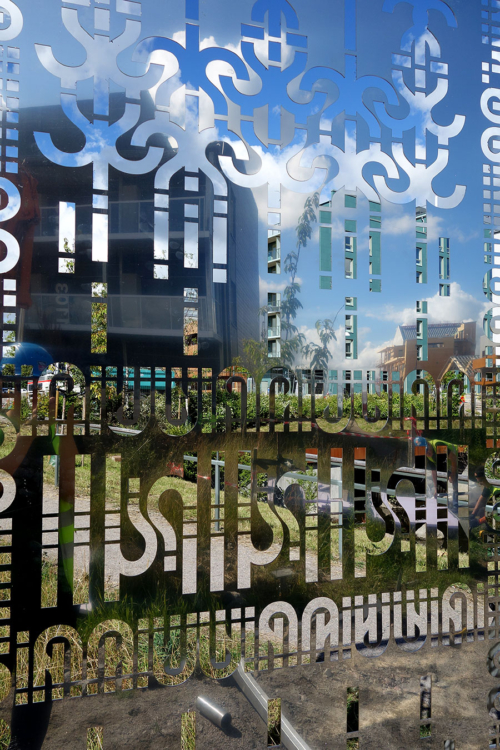
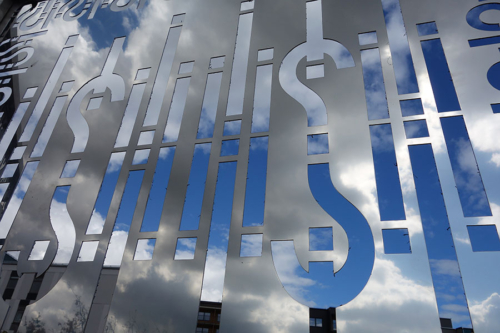
—————————
many thanks to Hasse, Omar, Heikki and Matija from Lundgrens Smide!